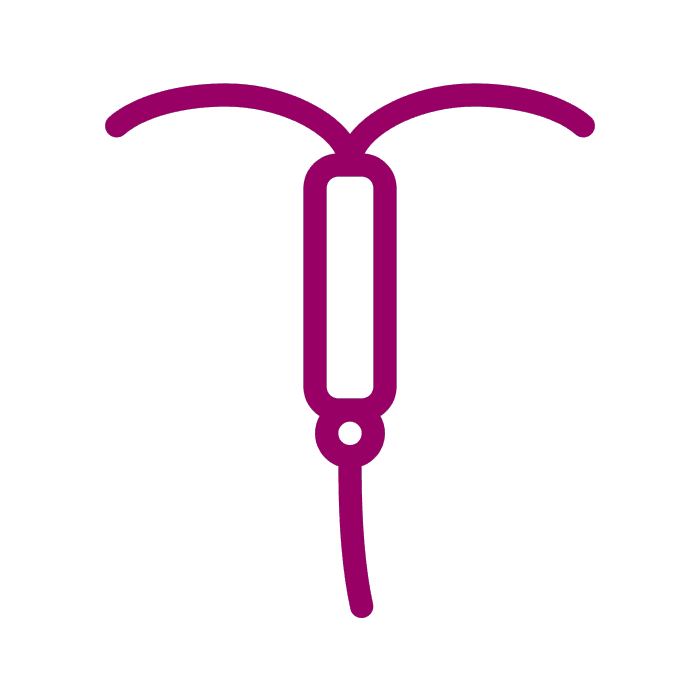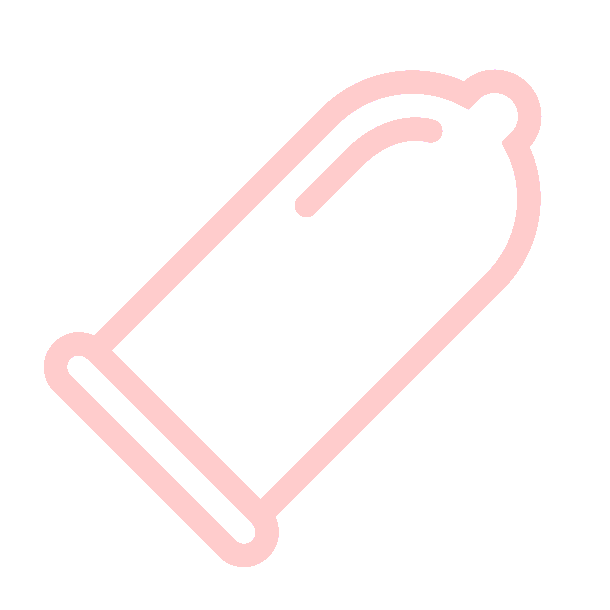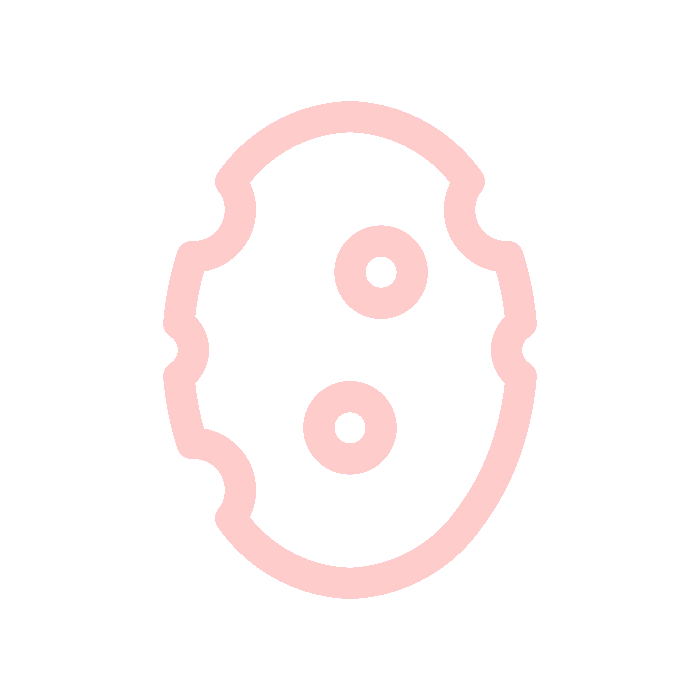
THE PILL
Hormonal Method
The pill is a small tablet containing hormones that are swallowed every day at the same time.
91 % Effective
Details
The oral contraceptive pill (also called “the Pill”) contains hormones that prevent pregnancy and is taken once a day. The hormones in the pill prevent pregnancy by stopping the release of an egg from your ovary (ovulation), thickening the mucus in your cervix to stop the sperm from entering your uterus, as well as thinning the lining of your uterus so it is less likely that a fertilised egg will attach.
There are two types of contraceptive pills, both of which contain hormones that prevent pregnancy. Combination pills contain the hormones oestrogen and progestin. Progestin-only pills are called “the minipill” and may be suitable for women who are breastfeeding or who have a history of blood clots and strokes and should not take oestrogen.
The pill should be taken at the same time every day, regardless of whether you have had sex or not. If taken correctly, the pill is very effective in preventing pregnancy.
How to
Ask your healthcare provider if the combined pill is the right contraceptive method for you. Your healthcare provider will also explain how and when to start taking the pill, as this depends on the type you use.
For the pill to be effective, it has to be taken at the same time every day. Missing a pill increases your chances of becoming pregnant. Some women find taking the pill at the same time as a daily routine, such as brushing their teeth, helps them to remember. If you do miss a pill, make sure to read the Patient Information Leaflet that comes in the box with your pill to find out when to take your next pill. If you are in doubt or have any questions, speak to your healthcare provider.
Pros
-
When taken correctly, the Pill is over 99% effective at preventing pregnancy
-
It is highly effective, widely available, easy to use
-
It does not interrupt sex
-
Some women find that their periods become regular, lighter and less painful
-
It may help reduce acne
-
It can help reduce the symptoms of premenstrual syndrome (PMS)
Cons
-
You need to remember to take the Pill at the same every time day
-
It may cause temporary side effects such as headaches, nausea, breast tenderness and mood swings. If these do not improve, speak to your healthcare provider about changing the type of Pill
-
Though rare, some women may be at an increased risk of serious health conditions, such as blood clots and breast cancer
-
It does not protect you against sexually transmitted infections (STIs), such as HIV), so you may need to use condoms as well
Side Effects
You may experience:
-
Changes in your monthly bleeding patterns, including:
-
Lighter bleeding and fewer days of bleeding
-
Irregular bleeding
-
Infrequent bleeding
-
No monthly bleeding
-
These changes in bleeding are normal and are not harmful. If you find them bothersome, speak to your healthcare professional.
-
Headaches
-
Dizziness
-
Nausea
-
Painful and tender breasts
-
Weight change
-
Mood changes
-
Acne (can improve or worsen, but usually improves)
-
Increase in blood pressure
Frequently Asked Questions
-
The combined oral contraceptive pill often referred to as the birth control pill or colloquially as “the pill”, is a type of birth control that is designed to be taken orally by women. It includes a combination of estrogen and progestogen hormones.
-
No, there are many different types of contraceptive pills available, and each of them is slightly different. The important thing is to follow the instructions that come with your pill package exactly. It’s important to take the pills as directed because missing pills or taking them not on time make them less effective. If you have any questions about how to take the pill, ask your healthcare provider for further advice.
-
Hormones used in the pill are mostly synthetic forms of the natural hormones progestin and estrogen. Some contain only progestin, e.g. progestin-only pill, others a combination of progestin and estrogen, e.g. the so-called combined pill.
The combined pill mimics a pregnancy to your body, although you are not pregnant, which prevents you from ovulation. It also thickens the mucus in the cervix, which makes it difficult for sperm to get through.
The progestin-only pill works by thickening the mucus at the entrance to the womb. In some women, it may also prevent ovulation.
-
Some contraceptive pills can improve the condition of your skin and hair; others help with symptoms such as acne, premenstrual syndrome (PMS), and irregular menstrual bleeding.
-
The pill is one of the most reliable forms of contraception, giving a very high degree of protection against pregnancy when taken as directed.
-
No, it is not necessary to take a ‘pill break’ unless you want to get pregnant. There is no effect on long-term fertility even if you take hormonal contraceptives for years.















CONTRACEPTIVE METHODS
CONTRACEPTIVE METHODS
-

CONTRACEPTIVE IMPLANT
1 or 2 small hormone-releasing silicone rods placed under the skin by a healthcare provider.
-

CONTRACEPTIVE INJECTION
The contraceptive injection is a shot of hormones that lasts for 1 up to 3 months.
-

CONTRACEPTIVE PATCH
A patch that sticks to the skin and releases hormones that are highly effective at stopping pregnancy.
-

CONTRACEPTIVE RING
A flexible plastic ring that is placed in the vagina by the woman and constantly releases hormones.
-

DIAPHRAGM
A diaphragm is a small dome that blocks the entrance to the cervix to stop sperm from entering the womb.
-

EMERGENCY CONTRACEPTIVES
Emergency contraceptives are hormone-based pills that are used in the event of accidental unprotected sex.
-

FEMALE CONDOM
A female condom is a sheath that is placed inside a woman’s vagina before sexual intercourse.
-

FERTILITY AWARENESS
Fertility awareness is the method of only having sex on the non-fertile days of your menstrual cycle.
-

INTRAUTERINE DEVICE
An IUD is a small, flexible, often T-shaped device wrapped in copper that is placed inside your womb by your healthcare provider.
-

INTRAUTERINE SYSTEM-IUS
An IUS is a small, flexible, T-shaped system that releases low levels of hormones and is placed inside the womb by your healthcare provider.
-

MALE CONDOM
A condom is a thin film sheath that is placed over a man’s erect penis before having sex.
-

PULL-OUT METHOD
Pulling out (also called Withdrawal Method) requires no additional hormones or devices, just impeccable timing and a lot of luck.
-

SPERMICIDES
Spermicides affect the way sperm travels in the womb making it hard for them to move freely and fertilize an egg.
-

SPONGE
A sponge blocks the entrance to the cervix and releases spermicide, both together stopping sperm from entering the womb and fertilizing an egg.
-

STERILISATION
Sterilisation is the process of completely taking away the body’s ability to reproduce through surgery or minimal invasion.

